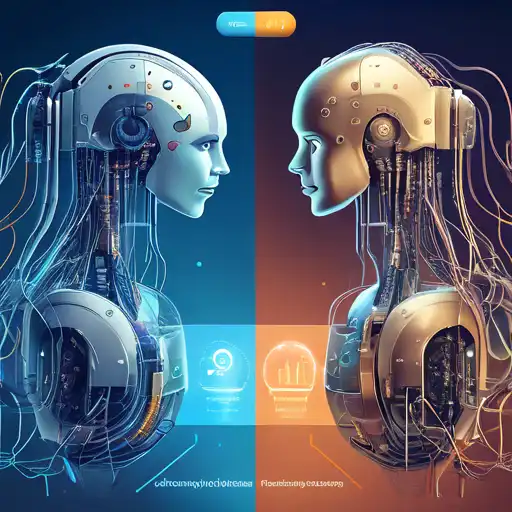Introduction to Machine Learning and Deep Learning
In the rapidly evolving field of artificial intelligence (AI), Machine Learning (ML) and Deep Learning (DL) stand out as two of the most significant and talked-about technologies. While they are often used interchangeably, there are key differences that set them apart. This article delves into these differences, helping you understand which technology might be best suited for your needs.
What is Machine Learning?
Machine Learning is a subset of AI that enables systems to learn and improve from experience without being explicitly programmed. It focuses on the development of algorithms that can process data, learn from it, and then make a determination or prediction about something in the world.
Key Features of Machine Learning
- Requires structured data
- Works well with smaller datasets
- Less computational power needed
- Easier to interpret and explain
What is Deep Learning?
Deep Learning, a subset of Machine Learning, uses neural networks with many layers (hence the 'deep' in Deep Learning) to analyze various factors of data. It is particularly effective in handling large volumes of unstructured data.
Key Features of Deep Learning
- Can work with unstructured data
- Requires large amounts of data
- Needs significant computational power
- Harder to interpret due to its complexity
Comparing Machine Learning and Deep Learning
While both ML and DL are used to make predictions or classifications based on input data, their approaches and capabilities differ significantly. Here's a closer look at how they compare:
Data Requirements
Machine Learning algorithms perform well with smaller, structured datasets. In contrast, Deep Learning requires large amounts of data to perform effectively but can handle unstructured data like images and text.
Computational Power
Deep Learning models, with their complex neural networks, demand much more computational power than traditional Machine Learning models. This often means higher costs and the need for specialized hardware like GPUs.
Interpretability
Machine Learning models are generally easier to interpret and explain, making them preferable in industries where understanding the decision-making process is crucial. Deep Learning models, however, are often seen as 'black boxes' due to their complexity.
Choosing Between Machine Learning and Deep Learning
The choice between ML and DL depends on several factors, including the size and type of your data, the computational resources available, and the specific problem you're trying to solve. For more insights into making the right choice, check out our guide on Choosing the Right AI Technology.
Conclusion
Understanding the differences between Machine Learning and Deep Learning is crucial for leveraging the right technology for your projects. While Machine Learning offers simplicity and efficiency for smaller datasets, Deep Learning provides unparalleled accuracy for complex, large-scale data analysis. As AI continues to advance, staying informed about these technologies will be key to staying ahead in the field.
